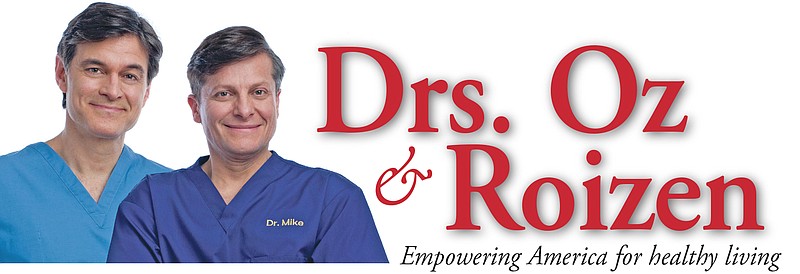Last Christmas Day, as 3 feet of snow fell in the mountain passes, motorists were stranded for eight hours on Interstate 15 between Southern California and Las Vegas, with many having to pull off to the side of the road to sleep and conserve gas. That was minor compared with the 250 cars that were trapped for 24 hours by 4 feet of snow in Washington State's Snoqualmie Pass in February 2019. Although these may sound like extreme examples of travel catastrophes, there are myriad situations when heading out from home by car, you're cut off from healthy food and drink, but could have planned ahead and made the whole experience easier to handle.
Take the highway rest stop that features McDonald's and Cinnabon. True, you can order a salad at Mickey D's, but if it's the Bacon Ranch Salad with Buttermilk Crispy Chicken you're taking in 470 calories, 40% of your daily value for saturated fat, 1,100 mg of sodium (46% of your DV) and only 3 grams of fiber - in a salad! A classic roll at Cinnabon? It has 880 calories with 17 grams of saturated fat (heading toward two days' worth of it) and 127 grams of carbs (half to a third of a day's intake) and 58 grams of sugar (the American Heart Association says 25 a day is max; we say no added sugar at all).
According to an Insure.com survey, almost half of drivers don't even pull over to eat on trips of an hour or more; they munch while behind the wheel. Their favorite foods in that situation are candy bars, granola bars and French fries.
None of those roadside or in-car food choices are going to make you more alert (a sugar-carb crash dulls your brain) and eating while at the wheel is distracted driving, almost as bad as texting! So next time you're traveling, if you think you're getting carsick, look at the food you've been eating.
Taking Control
The key to good road food is to make sure you decide when and what you eat, so you aren't forced to chow down whatever is at hand. (Or if you're trapped by a storm, you want to have enough to stay alert and energized.)
When: That means you don't let yourself get so hungry that you're willing to eat anything!
What: That means you always travel with a supply of tasty, healthy food and drink - and then look around to see what smart choices can supplement those basics.
So pack a bag or backpack with the following:
1. A large bag of nuts, for the protein and the healthy, hunger-quashing fats they contain. Get plain roasted peanuts (actually legumes), walnuts, almonds or mixed nuts.
2. Assorted fruit: apples, bananas, pears, oranges. Two or more pieces per person.
3. Hummus to go. They make packs now with crackers and fruit to dip into the yummy spread that provides carbs and protein. You can even take along a whole wheat, peanut butter and sliced strawberry and or blueberry sandwich (better than sugar-loaded jams).
4. Baby carrots and/or celery for munching.
4. A thermos of tea or coffee and bottled water.
5. If you stop at a convenience store, look for PLAIN unsweetened yogurt, whole grain crackers, unsalted nuts and beverages without added sugar or dairy. Be aware: Granola and energy bars are often loaded with added sugar, not a good choice. Want a sweet treat? Try 70% dark chocolate.
Bonus Info if You're Up in the Air
What can you do about airplane food on that five-hour flight that offers you nothing but a cookie or a bag of sugar-coated peanuts? You can bring unsalted nuts, cereal (opt for Muesli) as well as less than 3.4 ounces of yogurt, and solid food items like tuna fish, sliced turkey or chicken breast, even sandwiches. For a complete list of what is OK in carry-on luggage, check out www.tsa.gov/travel/security-screening/whatcanibring/food.
Mehmet Oz, M.D. is host of "The Dr. Oz Show," and Mike Roizen, M.D. is Chief Wellness Officer and Chair of Wellness Institute at Cleveland Clinic. To live your healthiest, tune into "The Dr. Oz Show" or visit sharecare.com.
(c)2020 Michael Roizen, M.D.
and Mehmet Oz, M.D.

